- Rhythm. The rhythm and tempo of your golf swing should be the same no matter what club you are using, or what kind of shot you are trying to hit. This is absolutely critical. If you are going to find consistent success striking the golf ball out on the course, you need to be using the same rhythm as much as possible. The good news is that once you find your own personal rhythm, it should be relatively easy to repeat it over and over again. As long as you don't make a conscious effort to change your tempo with different clubs, your natural timing should carry over from shot to shot.
- Balance. Another key to the golf swing is balance. This is an important part of your fundamentals regardless of which club is in your hands. Between these first two points (rhythm and balance), you have the two main keys on which you can build a quality golf swing. Even if the rest of your technique is far short of perfect, you will be able to hit plenty of good shots simply by having nice rhythm and balance in your swing. Much of your time spent on the practice range should be dedicated to fine tuning these areas because they are so vitally important to the ultimate quality of your ball striking.
- Confidence. This last point is not a technical tip, but rather a mental one. Many golfers pick 'favorites' in their bag, and they feel more confident when those clubs come out to play. For example, you might decide that you love to hit your driver. There is nothing wrong with that – having a positive attitude is a big step toward hitting good shots. However, if you decide that you hate hitting your irons at the same time, you will be doing yourself a major disservice. You need to carry the same confidence in your swing throughout the bag so that you can perform up to your capabilities as often as possible. Since the driver swing and iron swing are very similar, you should feel good about your ability to transfer success in one area over to the other part of the game.
- Find a space where you can make some practice swings without having to worry about hitting anything (or anyone). You can certainly be at the driving range to work on this drill, but you can also do it at home if you have the space available to swing.
- Take any one of your clubs out of the bag and get into your address position. Just because you won't be hitting any shots during this drill doesn't mean that you can slack off on your fundamentals. Make the effort to get into a comfortable, athletic stance with great balance between your feet. If it helps, you can pick a target off in the distance to use for an aiming point.
- Once you are settled into your stance, take your left hand off the club so you are only holding onto the grip with your right hand. Put your left hand in your pocket, or behind your back.
- With just your right hand, start the club in motion slowly. You are only going to move the club back away from your address position by about six inches, but those six inches should take about one second to cover. Once you are six inches or so back from address, reverse the motion and take the club back to your address position. Go back and forth several times, moving the club slowly each time.
- After completing several takeaway repetitions with just your right hand, switch it up and put the club in only your left hand. Repeat the process from above, moving the club back and forth approximately six inches behind the ball. Again, you should be moving rather slowly at this point, simply trying to feel the sensation of using a smooth tempo to take the club away from the ball.
- Continue switching back and forth between your right and left hand as many times as you would like. This is a handy drill to use when you are bored around the house, or when you are warming up prior to hitting some balls on the range.
- Stop the ball quickly. This is really the main reason why you should aspire to hit the ball higher. It is a great advantage to be able to stop the ball quickly, as you can access pins that would otherwise be impossible to get to with a lower trajectory. For instance, if you are facing an approach shot to a firm green where the hole is cut near the front edge, you would have almost no chance at setting up a birdie with a low flight. However, with a high flight, you can land the ball near the cup and keep it there. Also, hitting the ball higher with your mid and long irons will help you to hold the green from long distances.
- More diversity. With the ability to hit the ball high at your disposal, you can then pick and choose how high you want to hit the ball on each shot. When the conditions are calm and you have a great look at the green, you can throw it way up in the air and bring it down soft. Or, if you are facing a shot into the wind, you can flight it down and hit a controlled shot to the center of the putting surface. Remember, when you have the ability to hit it high, you can always bring it down when you need to – but the reverse isn't possible. Those who only are capable of a low ball flight will not be able to raise it up on command to suit the shot at hand.
- Consistent strike. It is easier to achieve a consistent strike on the back of the ball if you are hitting down and generating a high flight. Players who hit the ball low tend to 'pick' the ball off of the top of the turf, which is usually a less-consistent way to go about your swing. Once you learn how to hit down nicely, you should be able to repeat that action again and again. In fact, if you are used to picking the ball off the grass, you will be amazed and how great your ball striking can feel when you hit down properly.
- Feet slightly outside of shoulder width. One of the leading address position mistakes in the amateur game is standing with the feet too close together. If you keep your feet close to together when starting your swing, your body will naturally want to slide away from the target as you won't have a good enough base to maintain balance comfortably. With your feet just slightly wider than shoulder width apart, however, it will be relatively easy to stay on balance and prevent the slide.
- Knees flexed. This is another crucial point within your stance. It is easy to fall into the bad habit of standing over the ball with your knees locked out straight, and this is another error that you will commonly see among average golfers. Without flex in your knees, it will be hard to support your upper body rotation in the backswing, so you may find that your body slides to the right as a result. To prevent that mistake from occurring, bend your knees at address and maintain that bend throughout the backswing and into the downswing. Not only will this knee bend help you to avoid the slide, but it will also make your swing more athletic and dynamic overall.
- Back straight. Good posture is essential in the golf swing. Setting up over the ball with your back straight from your waist all the way up into your neck will promote an excellent rotation in the backswing. You are going to be turning your shoulders as the main form of rotation in the swing, but that task becomes difficult if you are hunched over the ball with a curve in your spine. To make sure your back is in a good position, work on sticking your chest out slightly at address and stick your backside out behind you as well.
- Moving the head forward at impact can cause the energy to be released too late in the swing resulting in a weak shot.
- Balance, balance, balance. When you are trying to hit the ball cleanly from the fairway – with any club – the number one key is always going to be balance. Your club is going to bottom out wherever your center of gravity happens to be, so you need to keep that point right over the ball. If you are moving all around from side to side during your swing, there will be almost no chance of clean contact at impact. Focus on keeping your weight in the middle of your stance while you rotate back and through the shot. With good balance in place, the rest of the swing should come together relatively easily.
- Sweep, not steep. As you come down into impact with your three wood, you want to be sweeping the ball off of the top of the turf. This is a different approach than you would take with most of your iron shots, where you are going to want to hit down aggressively through the ball. You shouldn't be taking a divot out of the fairway when you hit your three wood – or if you do, it should be a very small and shallow one. If you can get the club head to move flat across the top of the grass through the hitting area you will be well on your way to striking good shots.
- Forward ball position. To encourage the sweeping action that is detailed in the previous point, you should be playing the ball up near the front of your stance. As a good rule of thumb, you should move the ball back in your stance about two or three inches from its position when you are playing a driver. So, if you line up the ball with the inside of your left foot with the driver (as many players do), you will want to move the ball to the right a couple of inches for a three wood shot. If you were to allow the ball to move too far back toward the middle of your stance, it would be difficult to avoid the steep angle of attack that can lead to fat and miss-hit shots.
- Favor a fade. You don't have to play a fade when you are hitting the ball from the fairway with a three wood, but favoring a left to right shot sure can make things quite a bit easier. In order to hit a draw, you have to be attacking the ball from the inside – which requires you to take the club head dangerously close to the ground. Instead, consider coming in to impact slightly from the outside, which is likely to create a small fade once the ball leaves the club face. The fade should be relatively easy to control, and you should find that you are more consistent with your ball striking as well. Of course you can go with a draw if you prefer, but you should at least give the fade a chance on the driving range to see if it can work for you.
- Keep everything moving toward the target. The most common mistake that is made when trying to hit a three wood from the fairway is hitting the ball fat – and that usually occurs when the body stops turning toward the target in the downswing. To make sure that you can catch the ball cleanly time after time, focus on maintaining the speed of your rotation all the way through the shot. Turn hard to the left from the transition all the way through to the finish and you will be likely to strike the ball solidly at the bottom.
- Set the course. The most important thing you can do in your takeaway is trace a good path for the club to use when it comes back down into the ball. The club head is likely to retrace its path from the backswing when it comes down toward impact, so be sure you are setting yourself up for a great move at the bottom of your swing. Many golfers take the club away dramatically to the inside or outside of the intended swing path, and they are never able to get back on track as a result. With a wide takeaway, you should find that it is relatively easy to trace a good line as you go back – meaning you should have no trouble tracing that same line when you eventually come through the ball.
- Start out with great rhythm. A wide, one-piece takeaway is an excellent way to create rhythm and timing in your swing. Many amateurs rush through the takeaway by using their hands and wrists to move the club – and they never get the club swing matched up with their body rotation as a result. When you sweep the club back slowly, however, your shoulders will remain right over top of the club as it moves, and everything will be timed up beautifully at the top of the swing. Tempo is a big part of playing good golf, and you can go a long way toward improving yours simply by making a wide takeaway.
- Establish a shallow plane. For most of the shots you hit during a round, you are going to want to come into the ball on a relatively shallow plane. That means that the club head is moving along the ground for at least a few inches before it contacts the ball and slides into the turf to take a divot (with your irons). Steep swings – those that come down sharply from above – usually result in inconsistent ball flights, high spin rates, and overall poor outcomes – are only useful from time to time in specific situations. When you use a wide takeaway, you will find that you are setting the club up for a shallow approach into the ball when it comes back down toward impact.
- Consistency. Moves you make with the big muscles in your body are going to be more consistent than those made with your small muscles – which is why a wide takeaway is more consistent than a narrow one. A narrow takeaway will require you to use your hands and wrists – which contain some of the smallest muscles in your body. On the other hand, a wide, sweeping takeaway is controlled mostly by your shoulders and torso, where some of your largest muscles are located. Most golfers will quickly notice an improvement in the consistency of their swing after adding a wide takeaway to the start of the action.
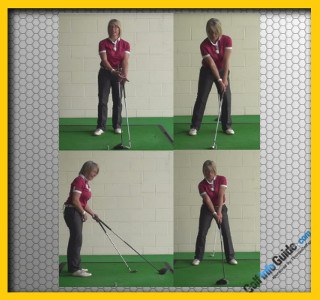
1. Driver Vs Iron Swing, The Correct Start Position And Swing
Following are three areas of your golf swing that should be unaffected by the transition from driver to irons.
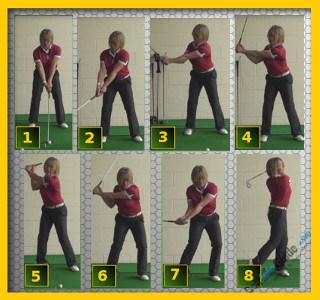
2. Six Golf Swing Basics That Best Golfers Have
If you have the opportunity from time to time to watch some of the golf tournaments shown on television, you are probably familiar with the swings of some of the world's top players. For a serious golfer, it is a thrill to watch the best players in the game do what they do. Golf is incredibly hard, as you already know, but the players on TV make it look so easy. For the average golfer, even hitting just one shot as well as those that are seen on TV would be incredibly exciting.
Of course, while watching those tournaments on TV, you have probably noticed that each golf swing you see looks a little bit different. No two players in the world have exactly the same swing – a fact that includes both professionals and amateurs. One of the interesting parts of the game is just how many different ways there are to get the ball to the hole. You don't have to swing like anyone else in order to be successful. You are free to be yourself on the golf course, and you can swing the club however you decide is going to be beneficial to your game.
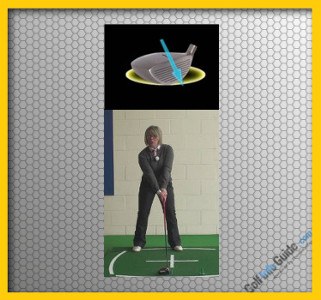
3. Best Driver Loft For Average Ladies Golfer
The average club head speed for a lady amateur golfer is much slower at 65 miles per hour and the slower your swing speed is, the higher the club face loft that is required for maximum shot distance.
At 60 miles per hour, an 11 degree driver produces 106 yards of distance, a 15 degree driver produces 117 yards of distance and a 19 degree driver produces 122 yards of distance. At 65 miles per hour, the best driver loft for the average lady golfer is 16 degrees of loft for optimum shot distance.
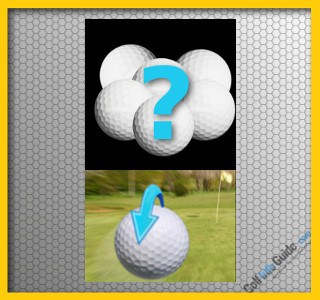
4. Ladies Golf Balls: How to Choose the Right One?
Playing a lower-compression ball is unlikely to hurt your game, and it may well help. Any ball labeled “Lady’s” or “Women’s” should fit the bill, while men’s models like the Wilson Staff Zip and DUO, Bridgestone e6 and Titleist NXT Tour S offer similar qualities.
Even the perfect ball for your swing speed isn’t likely to add more than a few yards to your tee shots. So what else should women look for when choosing a golf ball?
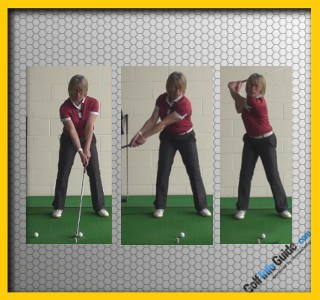
5. Take the Club Back Low and Slow For Correct Connected Swing
Follow the steps below to develop a slow tempo in your takeaway motion.
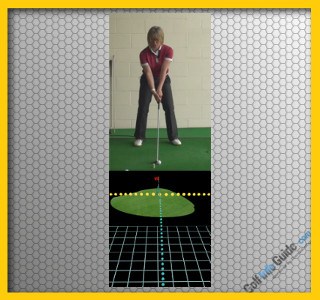
6. Low Ball Flight? Fix Hit Down To Fly The Golf Ball High
Following is a list of three advantages that can be enjoyed when you employ a high ball flight.

7. Why Rotate Your Body Without Sliding During A Golf Shot?
If you can manage to hit on the three address position points listed below, you should be well on your way to an excellent rotational golf swing.
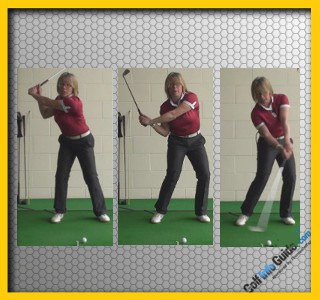
8. The Correct Way To Stay Behind The Golf Ball during the Swing and Impact
It is crucial that you stay behind the ball at impact in order to transfer the energy you have built up in your backswing.
Additionally, it is important that the left side of the body has not broken down and gotten too far ahead at impact. For instance, if the left arm is bent at impact then the shoulder, elbow and wrist joints will not align at impact. The breakdown will not allow for a transfer of energy from the body to the club. On video it will appear as though the elbow is well ahead of the ball at impact. The same can be said for the left knee if it were to be bent at impact.
Another indicator that you are not behind the ball at impact is your shoulder position. If your shoulders appear to be level at impact then despite what you may feel it is very difficult for the head to be behind the ball at impact. The right shoulder should be lower than the left shoulder which allows for a full extension of the arms down to the ball and then the target line.

9. Correct Way To Hit A 3 Wood Off The Fairway
So what is it about your golf swing that will allow you to strike a three wood cleanly from a fairway lie? There are a few basic points that need to be in place in order to have success with this shot. If you can hit on each of the points on the list below, you should be well on your way to a beautiful ball flight.
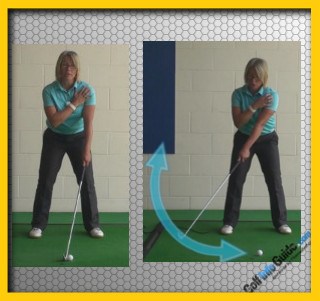
10. Keep Your Lead Arm Wide And In Line With the Shaft
Before you go out to work on adding a wide takeaway to your swing, it is important that you understand exactly why this move is so desirable in the first place. Once you have a clear picture of what a wide takeaway can do for your game, you will be even more motivated to put it into place.





